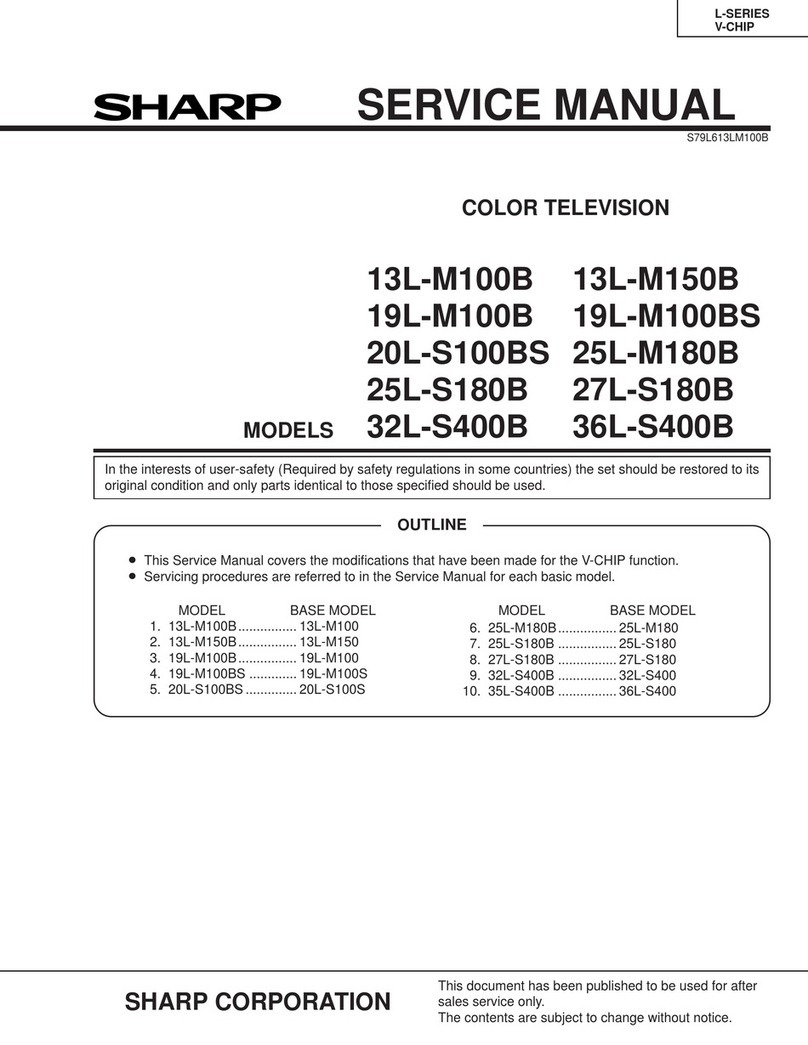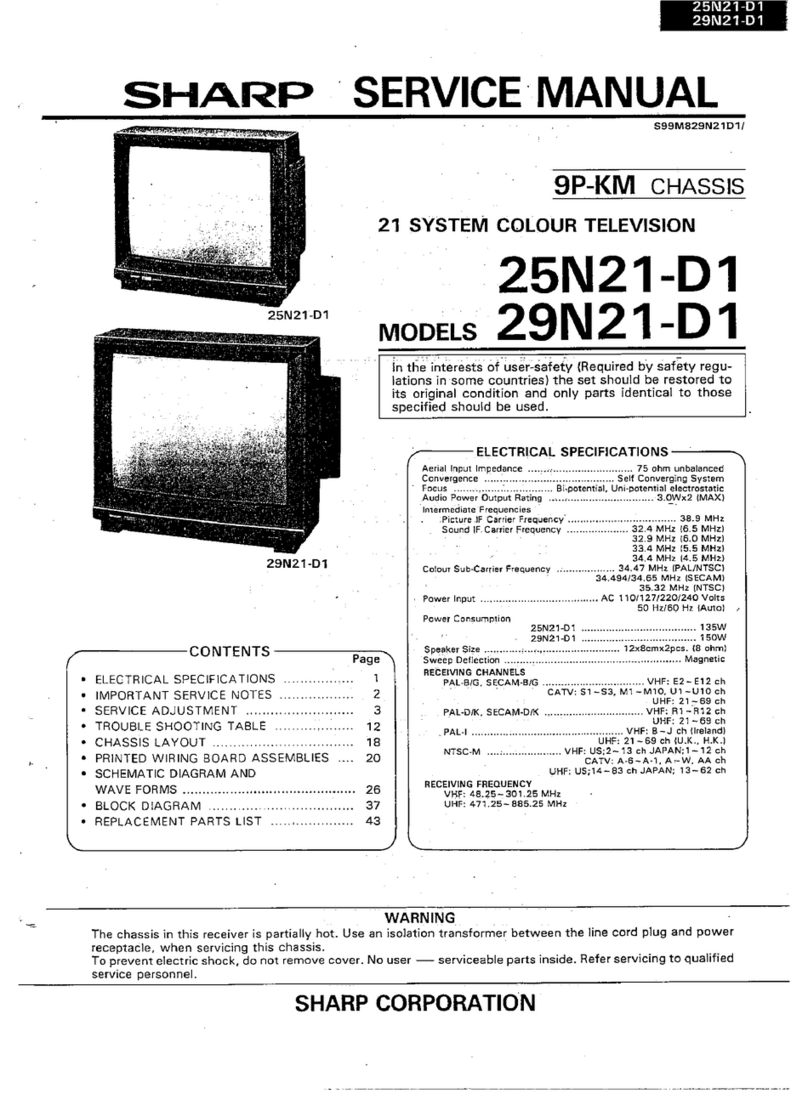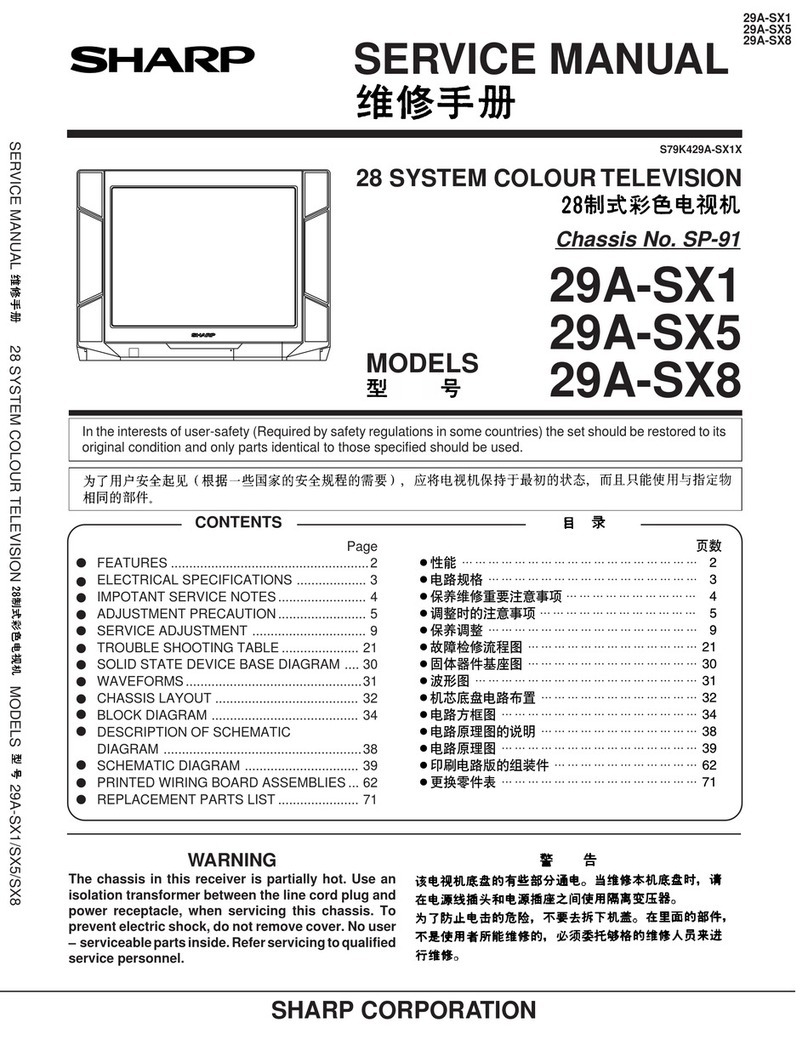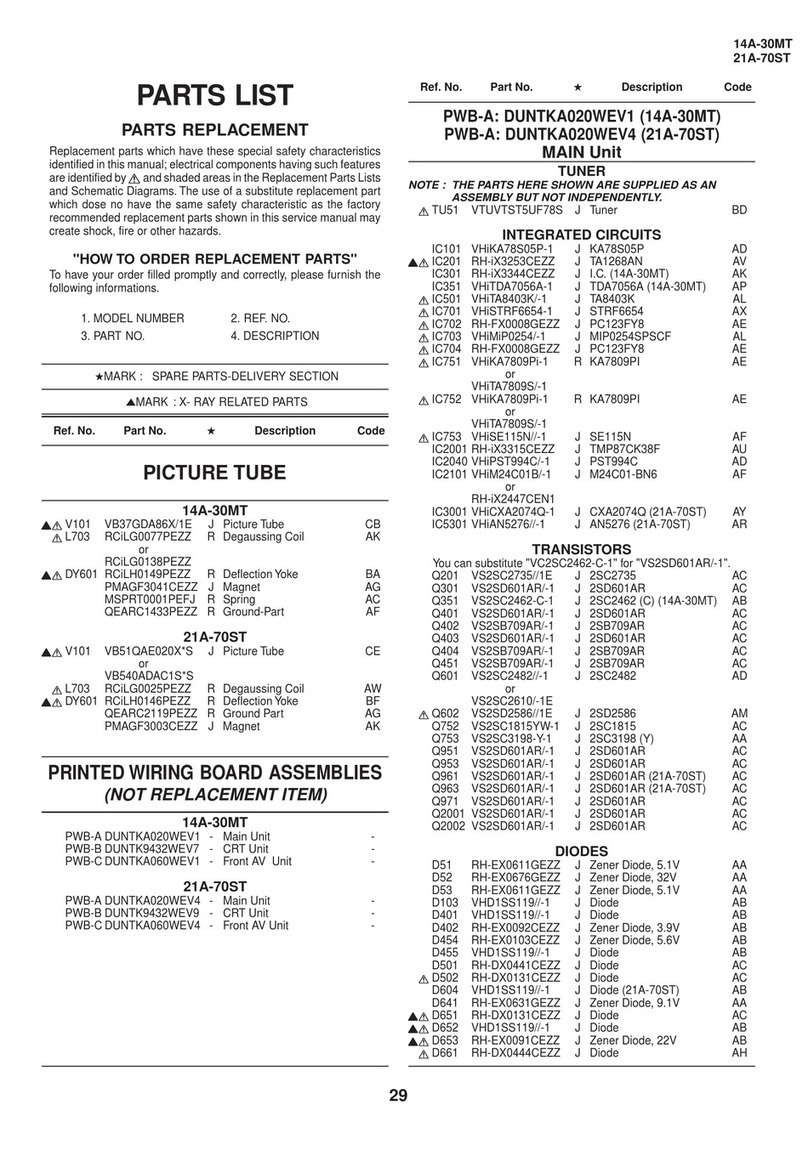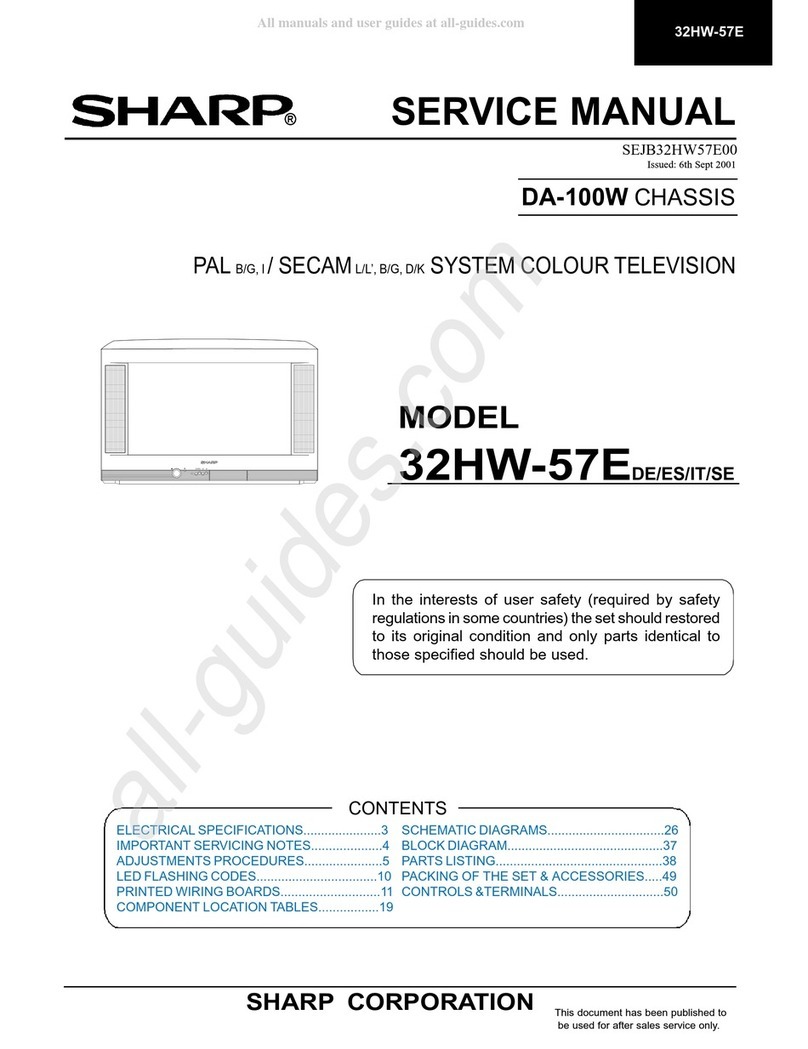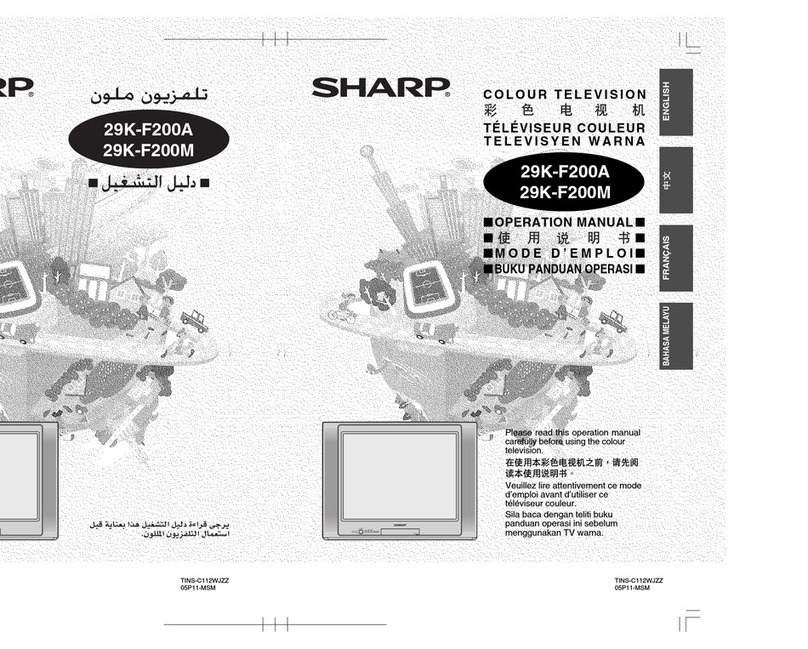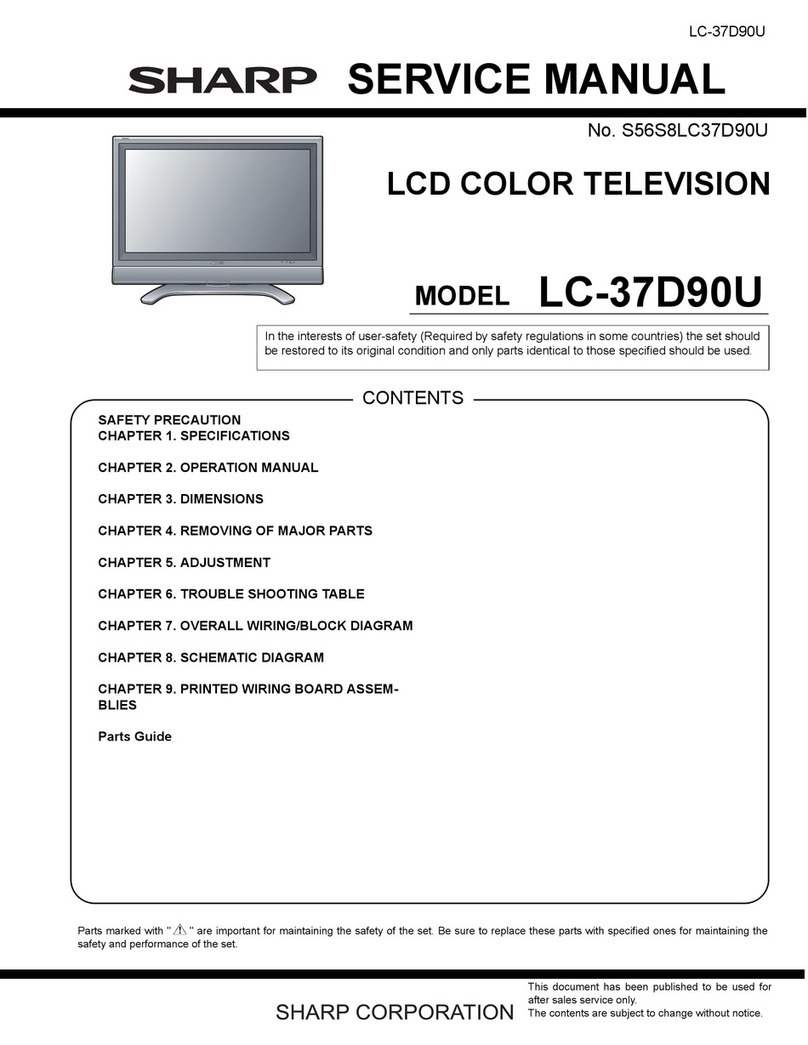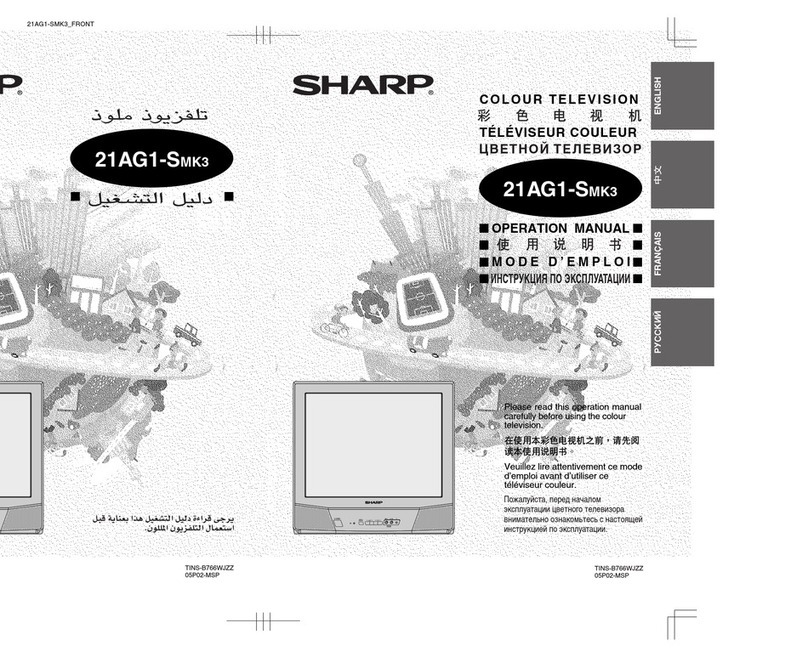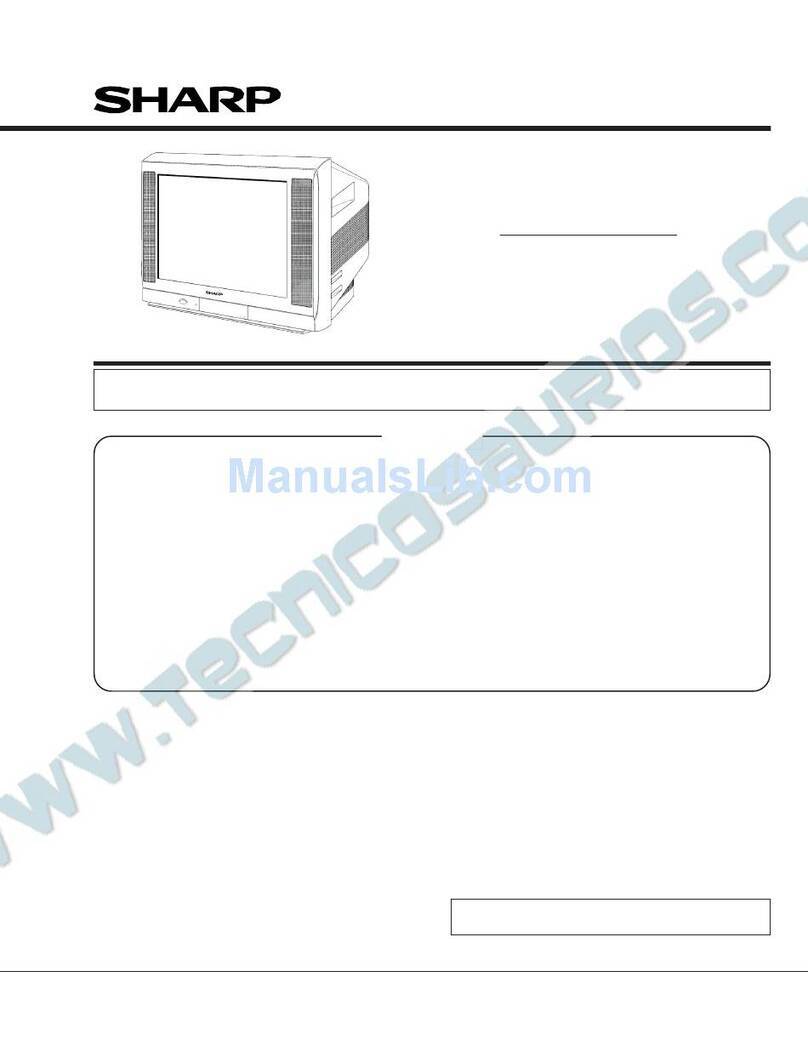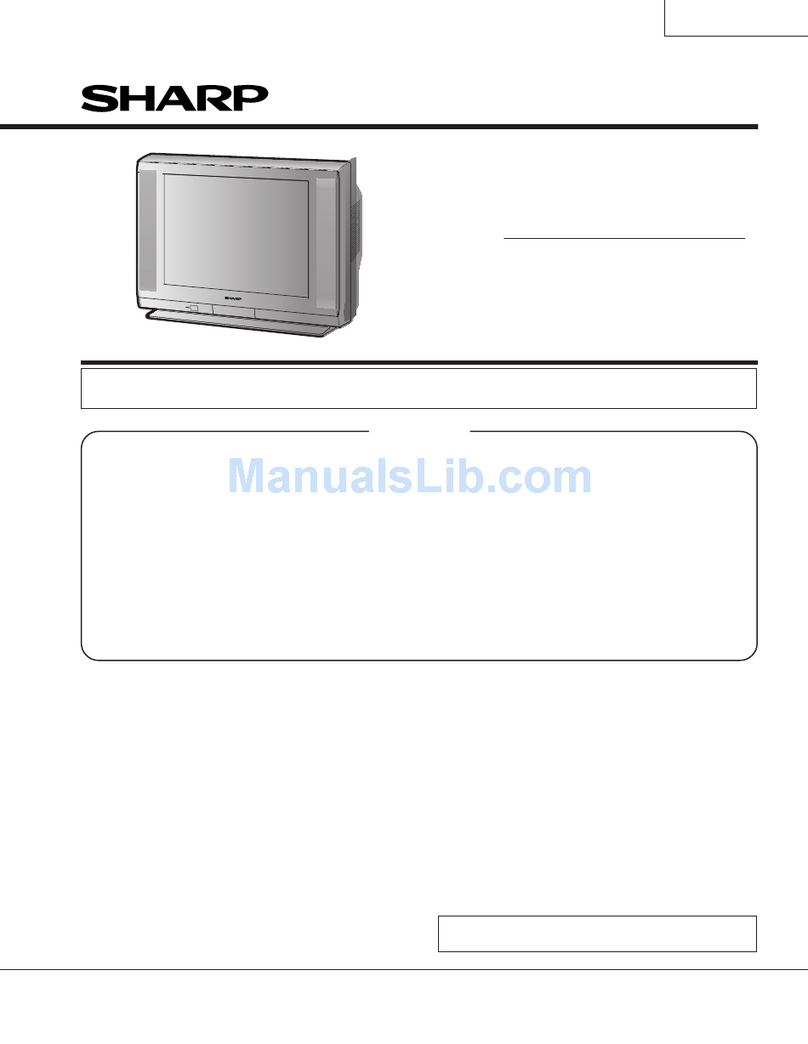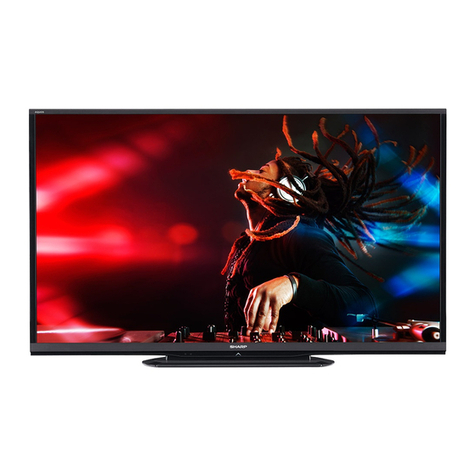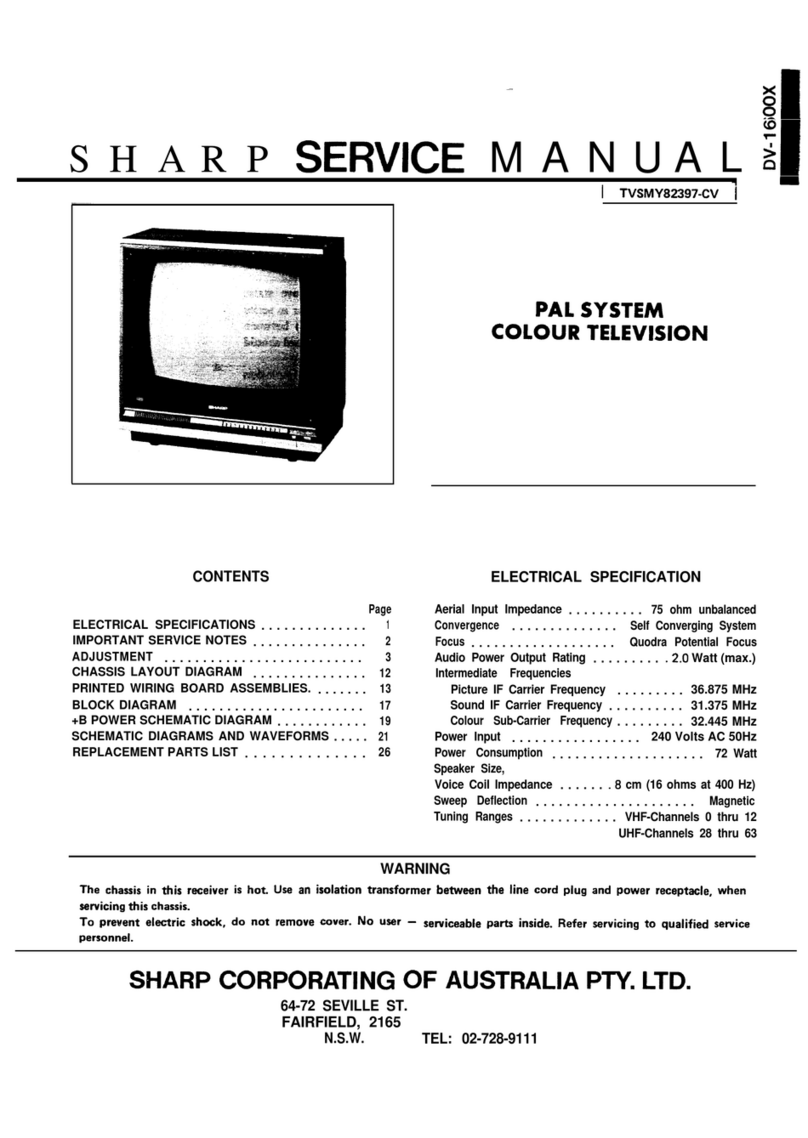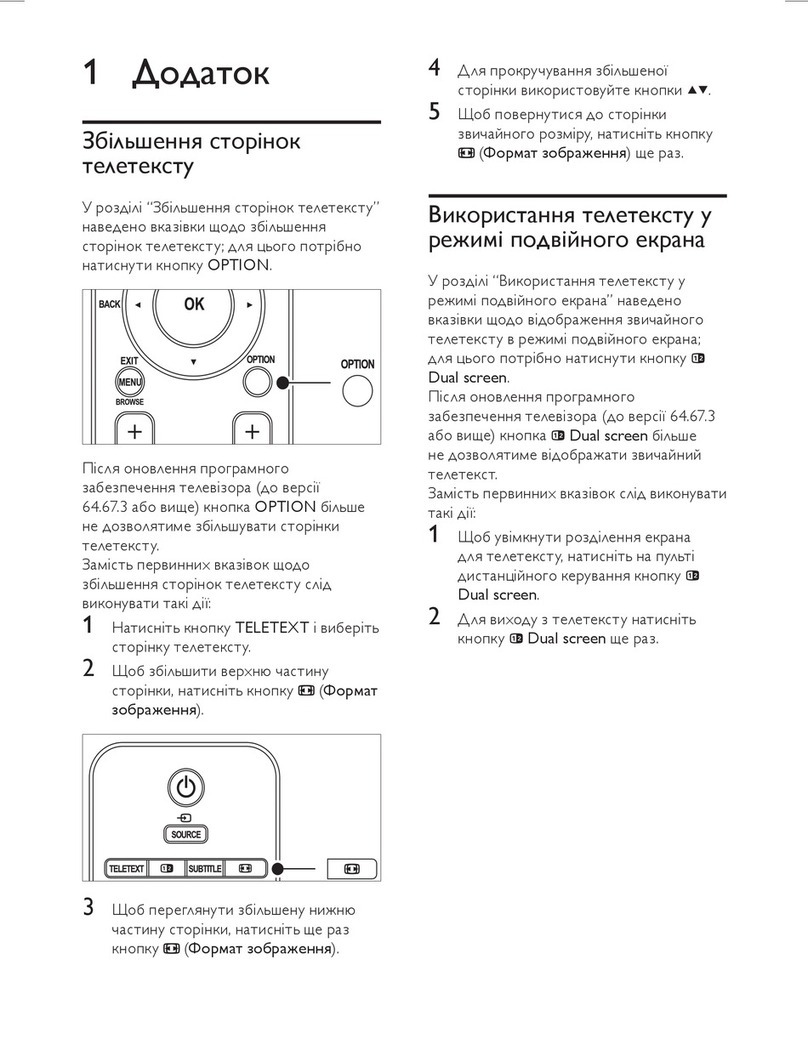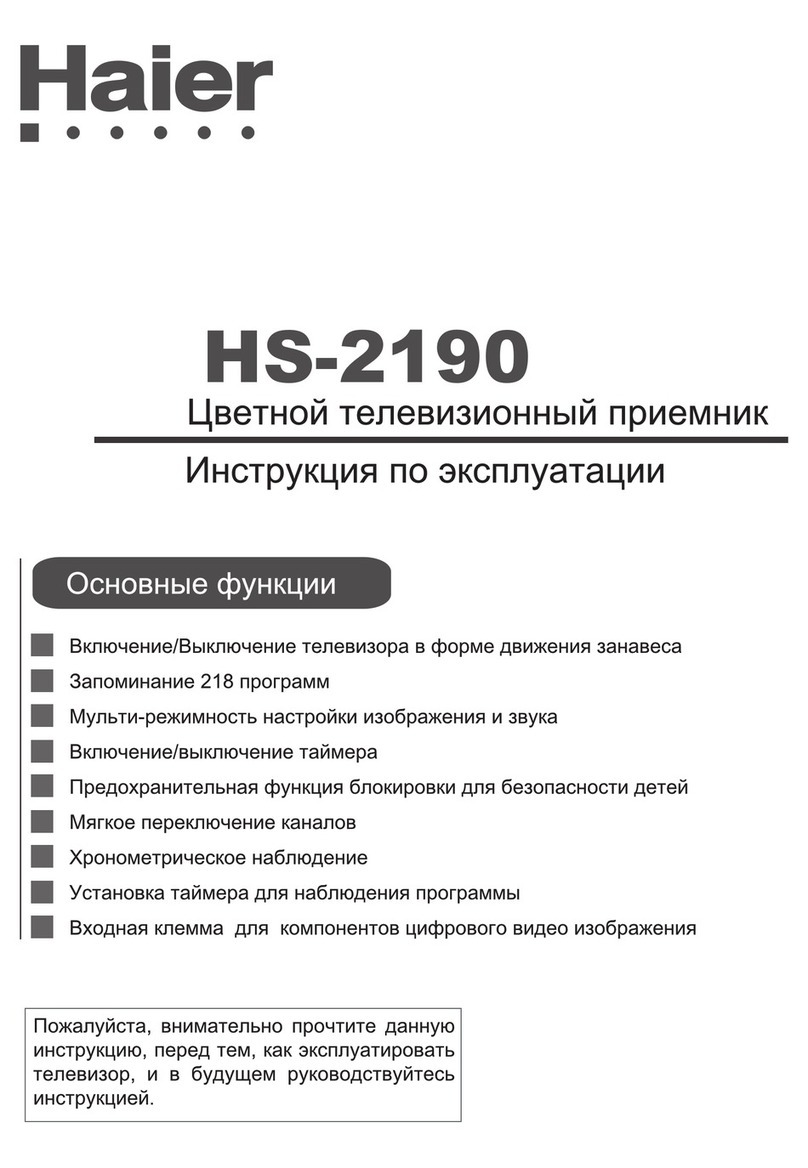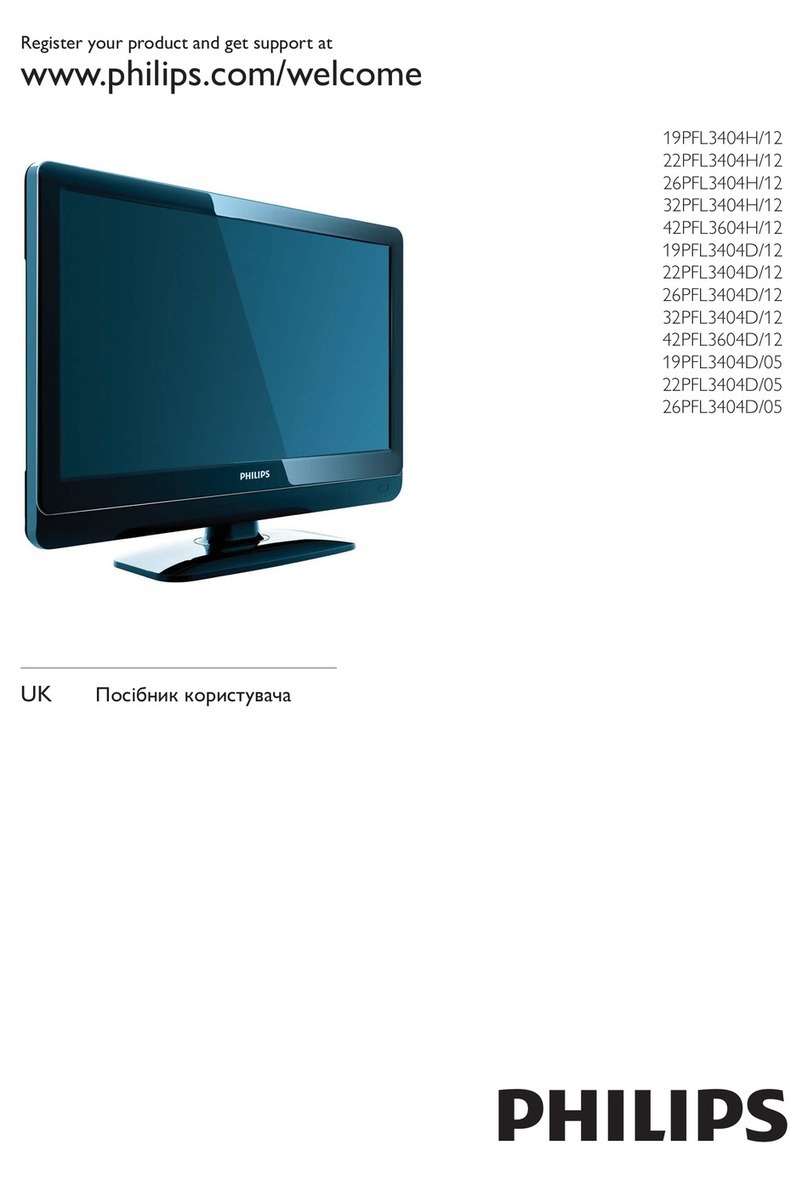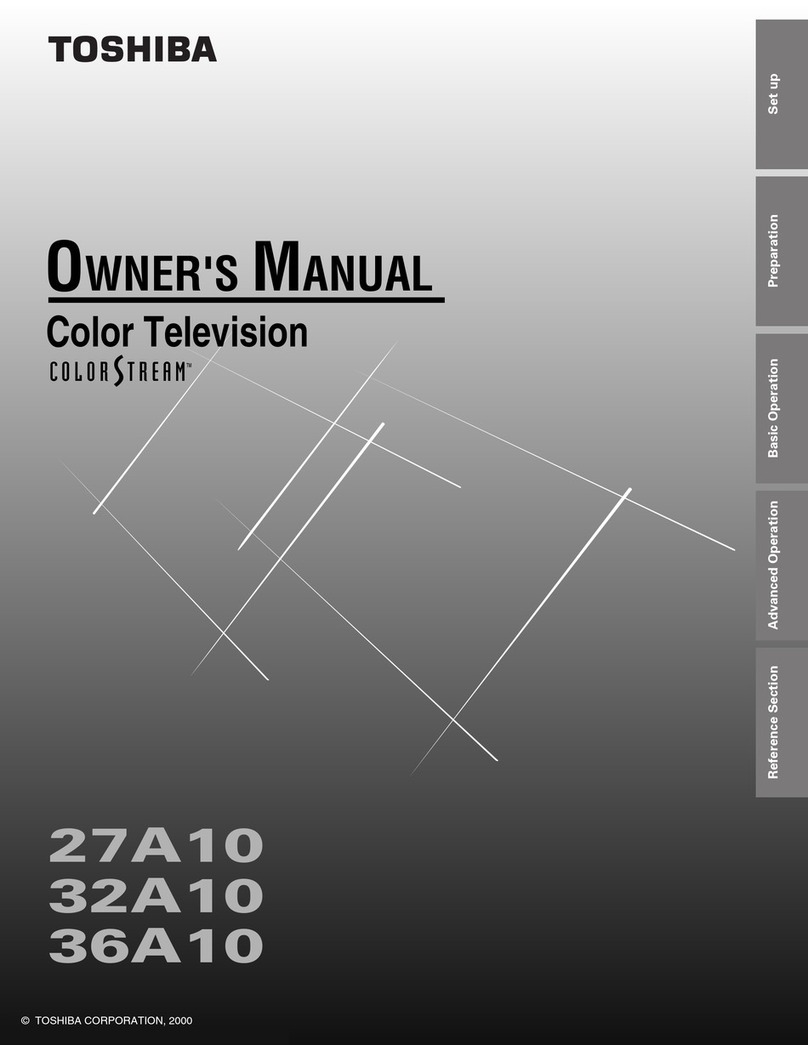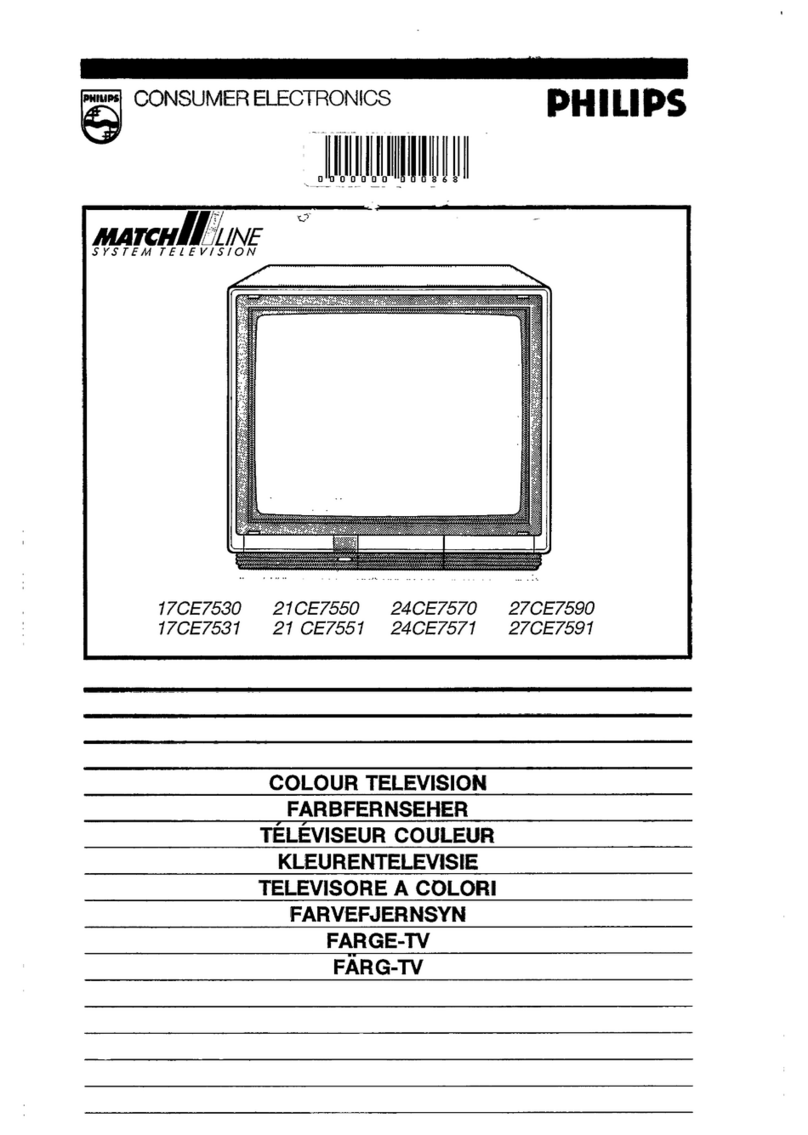
5
771M -
DOOR OPEN MECHANISM
DOOR LATCH HOOK
MONITOR SWITCH
MONITORED
LATCH SWITCH
STOP SWITCH
OPEN LEVER
LATCH
HEADS
Figure D-1. Door Open Mechanism
FIRE SENSING FEATURE
This model incorporates a sensing feature which will stop
the oven's operation if there is a fire in the oven cavity
during microwave cooking.
This accomplished by the LSI repeatedly measures the
voltageacrossthe temperature measurement circuit (ther-
mistor) during it's 32-seconds time base comparing the
obtained voltage measurements. If the most recent volt-
age measured is 300mV grater than the previous voltage
measured, the LSI judges it as a fire in the oven cavity and
switches off the relays to the high voltage transformer and
fan motor. The LSI also stops counting down. Please refer
to the following section for a more detailed description.
Operation
Please refer to the timing diagrams below.
1. Thethermistor operates within a32-seconds time base
and it is energized for three (3) seconds and off for 29
seconds. Two (2) seconds after the thermistor is
energized, the voltage across the temperature meas-
urement circuit is sampled by the LSI.
2. The above procedure is repeated. If the difference
between the first voltage measured (in step 1) and the
voltage measured when the procedure is repeated
(step 2) is greater than 300mV the LSI makes the
judgment that there is a fire in the oven cavity and will
switch off the relays to the high voltage transformer and
fan motor. The LSI also stops counting down.
CAUTION: BEFORE REPLACING A BLOWN FUSE
F8A TEST THE MONITORED LATCH
SWITCH, MONITOR SWITCH AND
MONITOR RESISTOR FOR PROPER
OPERATION.
When troubleshooting the microwave oven, it is helpful to
followtheSequenceofOperationinperformingthechecks.
Many of the possible causes of trouble will require that a
specific test be performed. These tests are given a proce-
dure letter which will be found in the “Test Procedure”
section.
TROUBLESHOOTING GUIDE
IMPORTANT: If the oven becomes inoperative because
of a blown fuse F8A in the primary latch
switch - monitor switch circuit, check the
primary latch switch, monitor switch and
monitor resistor before replacing the fuse
F8A.
3. Once the fire sensor feature has shut the unit down, the
programmed cooking cycle may be resumed by press-
ing the "START" pad or the unit may be reset by
pressing the "CLEAR" pad.
THERMISTOR
SENSING
VOLTAGE
ON
OFF
ON
OFF
0 29 64 (sec.)
3 sec.
Sensing the voltage across temperature mesure circuit.
OPEN JUDGE BY THERMISTOR
1. If the temperature of the thermistor does not rise to
more than 40˚C after 4 minutes and 15 seconds from
when the oven is started in convection, grill or dual
cooking (Microwave and Convection) mode, the oven
is turned off.
2. When the thermistor or the wire harness to the thermis-
tor is opened, the oven is turned off after 4 minutes and
15 seconds because this condition is same as above.
MONITORED
FUNCTION OF IMPORTANT COMPONENTS





